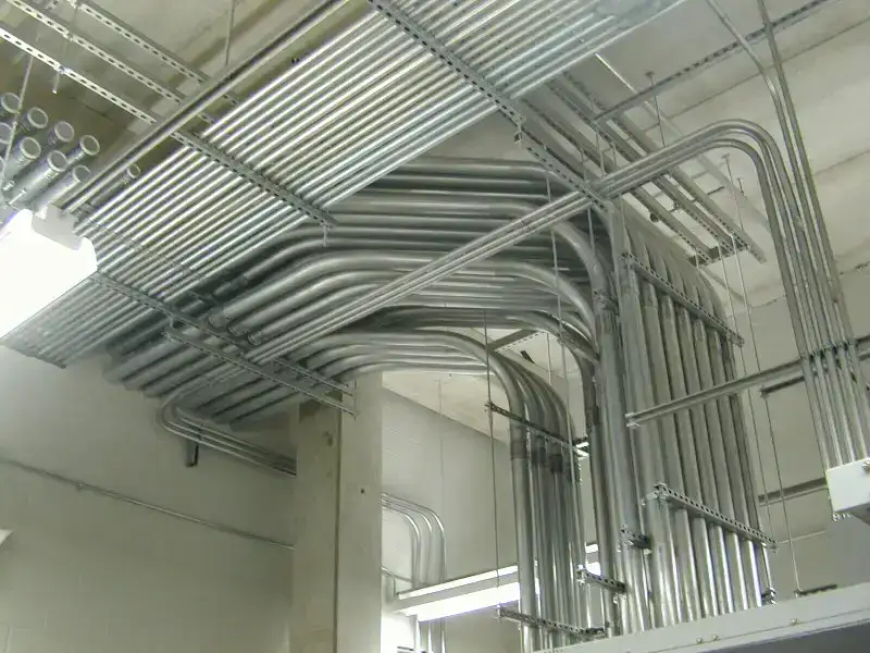What is a Conduit in Electrical?
Learn about the uses of Conduit in Electrical and gain insights into its type, uses and benefits so you can make the right choice for your project!

A Conduit in Electrical systems refers to a tube like structure that envelops wiring. They are mostly made up of either metal or plastic and come in different prices. The main purpose of a conduit is to protect the wiring from damage, exposure and other environmental hazards. It also prevents electrical shocks, so people are safe from potential accidents.
The average conduit installation cost is around $8 per linear foot. The cost can vary depending on many factors such as location, type of conduit used, labor expenses, complexity of the project, etc. A Construction Cost Estimating Firm can come up with a more accurate cost analysis. Estimators sometimes use advanced cost estimating software to create precise and efficient estimates. They not only help to prevent cost overruns but also save the project from unexpected time delays. SMA Estimating LLC can figure out the exact cost of the project by using innovative software like Trimble, Con Est, McCormick, and Planswift. Conduit material takeoff becomes precise, leading to accurate budgets.
For a better understanding of conduits, their cost and uses, let's take a look at various types of Conduits in Electrical systems.
Types of Conduit in Electrical Systems
1) Rigid Metal Conduit (RMC)
Rigid metal conduit or RMC has the thickest walls. It's a tough material that can be used outdoors as well. It is also resistant to damage from impact, yet ductile to facilitate bending.
It’s easy to cut, bend and thread, making installation easier. RMC is a popular choice among contractors as it provides durability and high strength. RMC can also come in different colors.
2) Galvanized Rigid Steel (GRC)
Galvanized Rigid Steel is another type of popular conduit on electrical systems. It is basically manufactured from mild steel and then is galvanized to prevent corrosion. It provides smooth and continuous raceways for fast wire pulling.
GRC is mostly used for industrial buildings as it is one of the heaviest and thickest types of conduits made by continuous welding.
3) Intermediate Metal Conduit (IMC)
IMC is used as an alternative to RMC. The main difference is that it is less thick and lighter but still provides good protection. It is also cheaper than RMC but can be used for both outdoor and indoor applications. Moreover, it is used for both industrial and commercial settings for electrical distribution systems and circuit wiring.
4) Electrical Metallic Tubing (EMT)
EMT conduit in electrical is a thin-walled conduit that is commonly used in cable installations. It is galvanized, so it protects the wire from rust and corrosion as well. It works for both indoor, outdoor or as wet and dry regions. Since it is very flexible, it is preferred to be used for remodelling or upgrading projects. It is ideal for areas where not much damage is expected.
5) Rigid Nonmetallic Conduit (RNC)
RNC are mostly made from PVC instead of metals. Some types of RNC are also made from fiberglass or polythene. They are smooth walled and non threaded which makes them ideal for wet locations. It has a more safety advantage as it does not induce current. They are an ideal alternative to metallic conduits.
6) Reinforced Thermosetting Resin Conduit (RTRC)
RTRC is a type of conduit in electrical systems made from fiberglass. It falls under the type of non-metallic conduits. It is highly durable and resistant to corrosion. In addition to commercial and industrial steering, it can also be used for infrastructure projects. RTRC also hasa lower installation cost as it is easier to work with. RTRC can withstand a wider temperature range than PVC.
7) Electrical Nonmetallic Tubing (ENT)
Electrical non-metallic Tubing offers many advantages over metallic conduits. It is lightweight yet provides good protection. It can be cut easily and bent to fit the requirements, which makes labor work easier. One doesn't need any costly equipment to install it. It can fit into tight and small spaces where metallic conduits cannot be used. It is mostly used for residential and commercial buildings.
How to Choose an Electrical Conduit?
Electrical Conduit Estimating Services
Electrical Conduit Estimating Services can help you make the right decision by managing the cost of the project. You can choose a conduit that fulfills the requirements of the project and falls within your price range.
Requirements of the Building
Each electrical project has different requirements. The conduits that you pick should be able to fulfill the requirements of the project, such as location of conduits, temperature needed, longevity, maintenance etc.
Durability
Always make sure that you choose durable material that lasts long. Long lasting conduits may have more upfront cost but in the long run it ends up saving money. It will save you from spending much on maintenance costs.
Conclusion
Conduits in the electrical system play an essential role in safeguarding. It not only protects the wires but also protects people from electrical accidents. Conduits are one of the most integral parts of electrical wiring, and one should not neglect them. Many conduits come in different trade sizes, but you can also cut and mold them according to your requirements. If your project requires a lot of cutting and bending, then make sure that you choose a flexible conduit!





















































